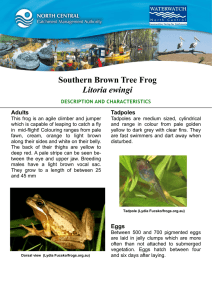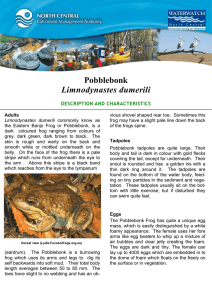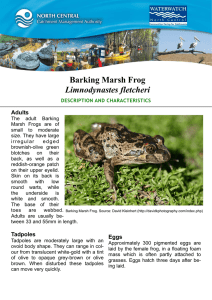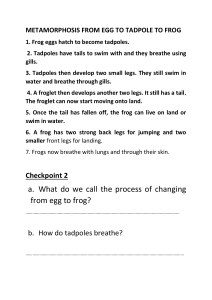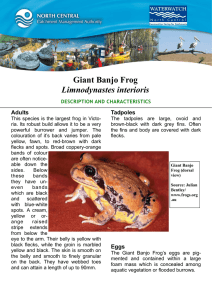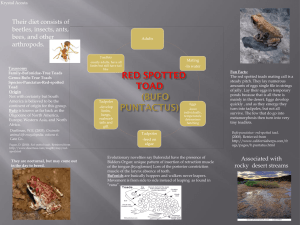Spotted Marsh Frog Limnodynastes tasmaniensis Adults
advertisement
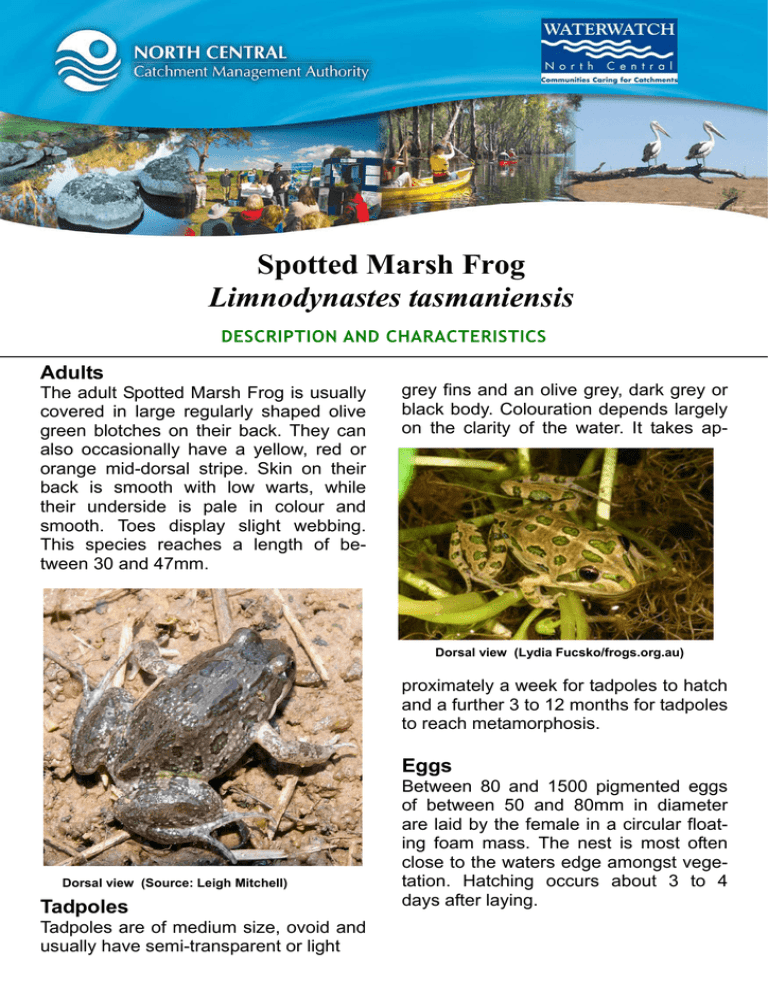
Spotted Marsh Frog Limnodynastes tasmaniensis DESCRIPTION AND CHARACTERISTICS Adults The adult Spotted Marsh Frog is usually covered in large regularly shaped olive green blotches on their back. They can also occasionally have a yellow, red or orange mid-dorsal stripe. Skin on their back is smooth with low warts, while their underside is pale in colour and smooth. Toes display slight webbing. This species reaches a length of between 30 and 47mm. grey fins and an olive grey, dark grey or black body. Colouration depends largely on the clarity of the water. It takes ap- Dorsal view (Lydia Fucsko/frogs.org.au) proximately a week for tadpoles to hatch and a further 3 to 12 months for tadpoles to reach metamorphosis. Eggs Dorsal view (Source: Leigh Mitchell) Tadpoles Tadpoles are of medium size, ovoid and usually have semi-transparent or light Between 80 and 1500 pigmented eggs of between 50 and 80mm in diameter are laid by the female in a circular floating foam mass. The nest is most often close to the waters edge amongst vegetation. Hatching occurs about 3 to 4 days after laying. LIFE CYCLE AND MATING CALL Males call from the water, usually concealed in floating vegetation. This species has two call races. The northern call race (central, northern and eastern Victoria) have a short staccato call with three or four distinct notes repeated in a long series of- “kuk-kuk-kuk”. While the southern call race have a single sharp call- “click” or “plock”, which is similar to the sound of stones being hit together. Calling occurs almost year round, while breeding occurs in all months except June and July. Females are reproductively active at less than 2 years of age. Life History Cycle (Source: www.frogs.org.au) HABITAT AND DISTRIBUTION The Spotted Marsh Frog is one of the most common frogs within its range. This frog is usually found close to water, except in dry periods when it seeks shelter in cracks in the ground, or under rocks. Floodplains, open forests, woodlands, shrublands and grasslands including open and disturbed areas with semipermanent water sources are all areas where you may encounter this species. Eggs and tadpoles reside in the still waters of dams, streamside ponds, lakes, swamps and flooded grasslands. Victorian Distribution (Source: www.frogs.org.au) IMPORTANCE AND POTENTIAL THREATS The Spotted Marsh Frog is not listed under the Flora and Fauna Guarantee Act 1988 as a threatened species. Population sizes are suspected to be either stable or increasing. This species is extremely capable of adapting to a wide range of habitats which is the most likely reason its distribution and population sizes are so healthy. Possible threatening processes affecting this species include: salinisation; direct human impacts such as urbanisation and tourism; inappropriate catchment management which results in the deterioration of water quality conditions; and habitat modification that removes vital vegetation and introduces invasive weeds.
